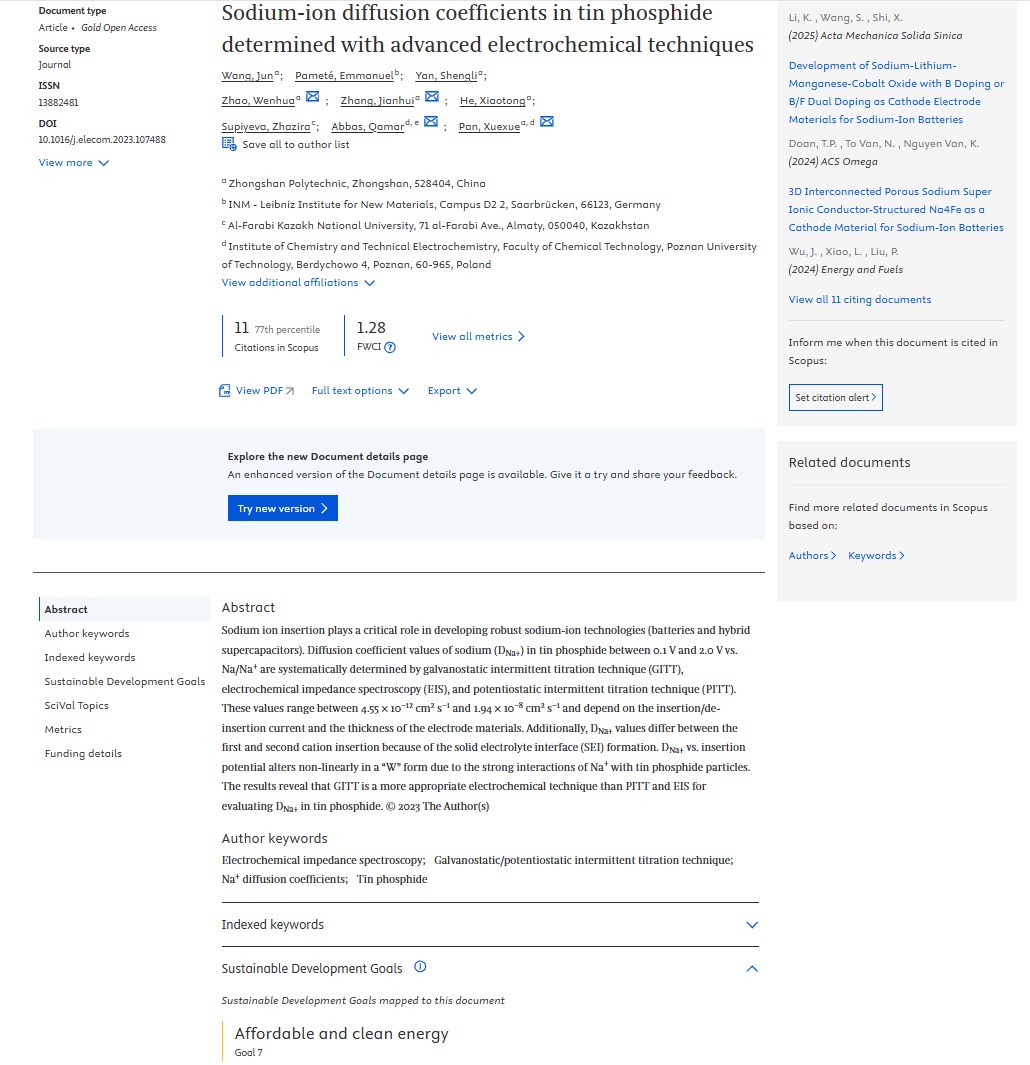- Main
- News
- Scientific articles within the framework of SDGs 7 and 15 by the lecturer of the Department of Physical Chemistry, Catalysis and Petrochemistry
Scientific articles within the framework of SDGs 7 and 15 by the lecturer of the Department of Physical Chemistry, Catalysis and Petrochemistry

Supiyeva Zh.A., acting Associate Professor of the Department of Physical Chemistry, Catalysis and Petrochemistry, is the author of the following articles:
(i) «Sodium-ion diffusion coefficients in tin phosphide determined with advanced electrochemical techniques» (doi.org/10.1016/j.elecom.2023.107488) — SDG 7,
(ii) «Microcrystalline-Fe2P4O12 as eco-friendly and efficient anode for high-performance dual-ion battery» (DOI: 10.1016/j.cej.2024.156516) — SDG 7, 15,
(iii) «Iodine Adsorption in Nanoporous Carbon to Fabricate Assimilated Battery Electrodes for Durable Hybrid Supercapacitors» (https://doi.org/10.3390/ma17143407) — SDG 7, published in journals indexed in Scopus and Web of Science. Scientific publications are in line with the Sustainable Development Goals. These goals are described below.
SDG 7 – Affordable and clean energy.
Ensure access to affordable, reliable, sustainable and modern energy for all.
The world is making progress, and there are encouraging signs that energy is becoming more sustainable and affordable. Access to electricity in poor countries is starting to accelerate, energy efficiency continues to improve, and renewables are making impressive strides in the power sector. The Energy Progress Report provides a global dashboard to record achievements in energy access, energy efficiency and renewable energy. It assesses the progress each country has made in these three areas and gives a snapshot of how far we are from achieving the Sustainable Development Goals by 2030.
SDG 15 – Life on Land.
Protect, restore and promote sustainable use of terrestrial ecosystems, sustainably manage forests, combat desertification, and halt and reverse land degradation and halt biodiversity loss.
Nature is essential to our survival: it provides us with oxygen, regulates weather patterns, pollinates our crops, and produces our food, fodder, and fiber. But it is under increasing stress. Human activity has altered nearly 75% of the Earth’s surface, squeezing wildlife into ever-smaller corners of the planet. Around 1 million animal and plant species are at risk of extinction. Deforestation and desertification caused by human activity and climate change pose serious challenges to sustainable development and are hampering the lives and livelihoods of millions of people. Forests are vital to sustaining life on Earth and play a key role in combating climate change. The health of our planet is also affected by the emergence of zoonotic diseases – diseases that spread from animals to humans. As we continue to encroach on fragile ecosystems, we come into increasing contact with wildlife, allowing pathogens to spread from wild animals to domestic animals and humans, increasing the risk of disease emergence and intensification.
Supiyeva Zh.A.


